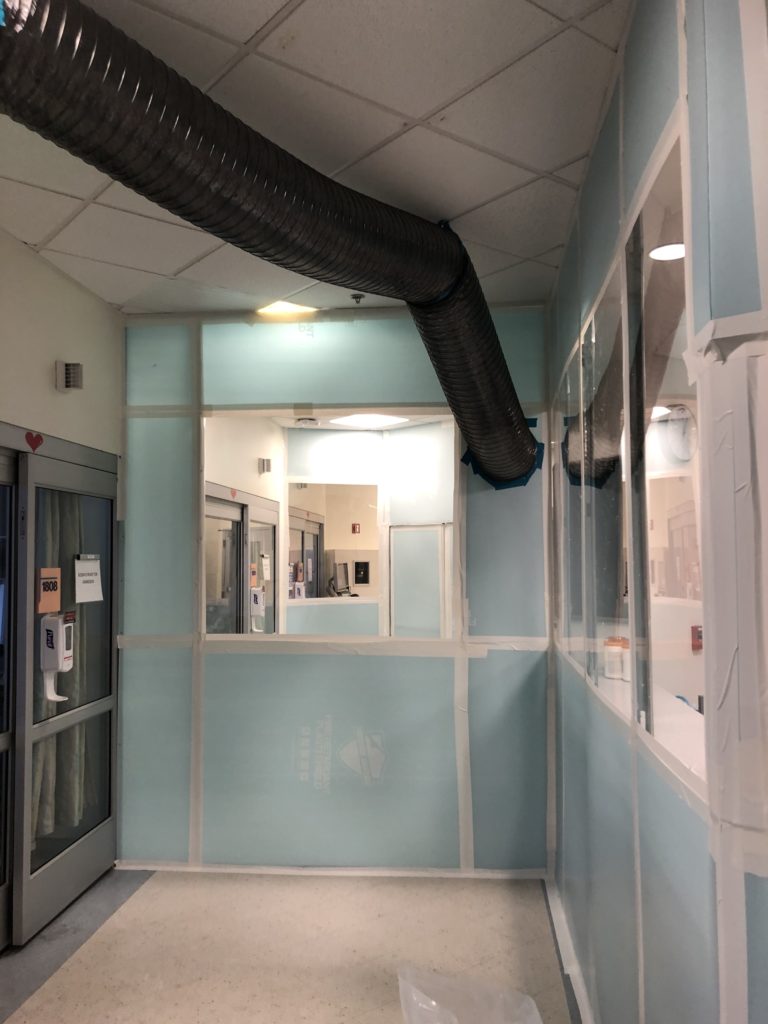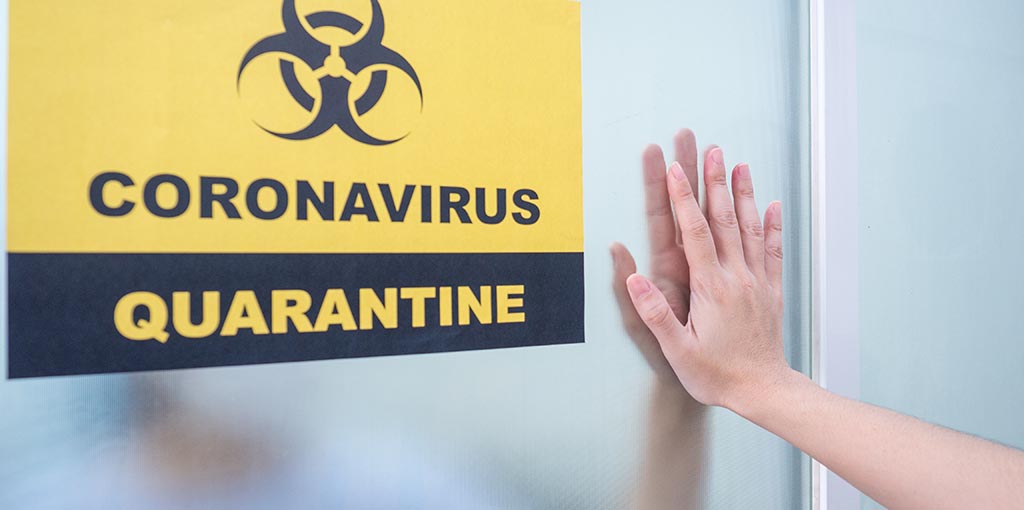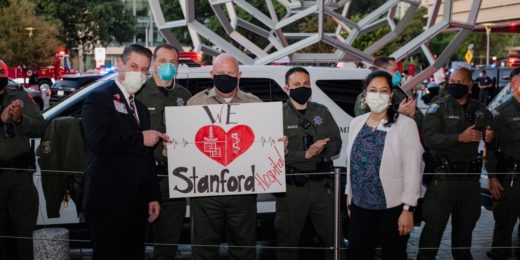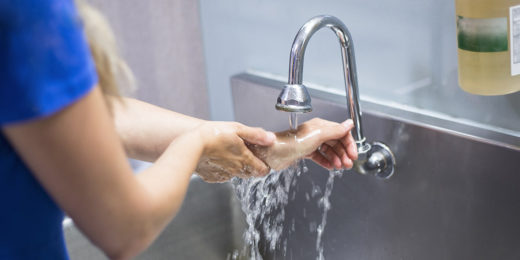In 2020, Diego Cagigao and his team faced down the biggest challenge of their careers: how to keep a hospital clean when simple actions, like opening the door to a patient's room, can pose an infection risk. Managing airflow is crucial in a hospital, where microscopic, infectious particles from one patient can escape into the environment and quickly spread to others.
But how do you contain that threat in the heat of a pandemic? That was the issue confronting Cagigao and his colleagues in the Environmental Services Department last year at Stanford Health Care-ValleyCare's hospital in Pleasanton, California.
When the coronavirus struck, the 167-bed community hospital had only six isolation rooms, including one in intensive care. That limited its ability to care for patients at a time when it faced a potential onslaught of COVID-19 cases.
"We were all sitting around in our command center, trying to figure out how we could increase our capacity," said Cagigao, the hospital's environmental services director, the department responsible for maintaining the facility's hygienics. "We just started brainstorming."
Their challenge was to convert a large number of rooms to isolation rooms by establishing negative air pressure within them. When the air pressure in a room is lower than the surroundings, air can flow into the room but not escape it, meaning any bacteria, virus or other pathogen could be contained within the room, and people outside the space would not be at risk.
Most large hospitals have some of these rooms, also called negative-pressure rooms, but smaller hospitals generally do not.
The designers of the new Stanford Hospital building, which opened in 2019, incorporated air-handling technology that includes a system of internal fans and dampers in the walls that open and close to regulate air flow. The system allows air pressure in a room to be modified in less than 24 hours, allowing standard patient care rooms to be quickly converted to isolation rooms.
But at SHC - ValleyCare, officials had to come up with an outside-the-box solution. One of Cagigao's colleagues, assistant chief engineer Angelo Agoncillo, proposed an ingenious scheme. Agoncillo had worked at Stanford Health Care before the new building opened and had converted a number of rooms to negative pressure there.
He adapted the concept at SHC - ValleyCare by using a small space to build an anteroom outside two of the intensive care units. The 6-by-8-foot room serves as a waystation between the patient room and the outside corridor.
Caregivers could wheel a bed into the anteroom and close the door to maintain the pressure balance. The clinician could then move the patient into the room, which was equipped with a big HEPA filter to scrub the air and push it out the window. In keeping with guidelines from the federal Centers for Disease Control and Prevention, the perimeter of the hospital was fenced to prevent the contaminated air from reaching people outside.
"We were fortunate that at this campus the majority of the rooms had windows that we could open," Agoncillo said. "That gave me the idea that we could exhaust the air directly to the outside so none of the virus could circulate through any department. ... As long as there is more air going out than coming in, it becomes a negative pressure space."

The anteroom walls had to be made of a solid material that would not leak air or become damaged if accidentally bumped. And it had to be nonporous so it could be readily disinfected between patients.
After some research and trial and error, the team members came up with a double-walled booth made of plexiglass and corrugated plastic. Dozens of team members worked night and day to construct the new system in less than two weeks, converting two additional rooms to negative pressure, Agoncillo said.
"It was an-all-hands-on-deck kind of moment," Cagigao said. "I don't think any of us spent less than 16 hours a day at the hospital," he said.
Using this and other methods, the hospital ultimately equipped more than 50 rooms with the large HEPA filters that effectively forced contaminated air outside. "That is almost 50 percent of the rooms in the hospital, which in most places is quite a crazy to do," he said, laughing.
The hospital tests the room pressures every day, using a device that detects which way the air is flowing, Agoncillo said.
All that effort served the hospital well, as it took in as many 35 COVID patients at the peak of the pandemic, Cagigao said. It had enough capacity that it was able to accept some patients from Southern California, when hospitals there became overwhelmed.
"I speak with colleagues all over the country, and not many hospitals did as much as we did," Agoncillo said. "That's something I'm proud of. We acted quickly, and we were ready."
Cagigao said it was a remarkable group response to the crisis. "I have to say we have an amazing team," he said. "Everybody pitched in and helped each other. It was one of the greatest things I've ever been a part of. And I've been in this industry for more than 20 years."
Photo by peenat






